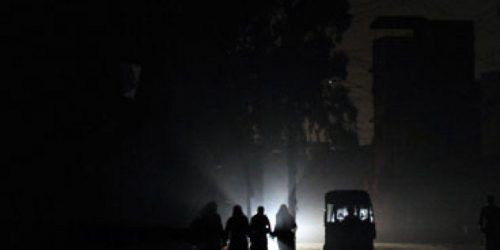The whole country went into a power blackout on Sunday night. This is a technical issue requiring serious investigation and a non-political discussion and debate.
Blackouts have occurred in many countries in the past including the US, Brazil, Indonesia, Malaysia and India etc. The latest blackout in India was in 2012, on successive days on July 30 and 31, 2012 – affecting 300 million and 700 million people respectively. Overdrawing of electricity by certain Indian states and weak interregional transmission were cited to be the reasons.
There are many reasons for such blackouts and there are also solutions and safeguards to guard against them, depending on how much resources – economic, technical and human – are applied.
For now, for the Sunday blackout, formal investigations have been ordered and one has to wait till the conclusion of the investigation. However, we would like to give the reader a context and perspective to the problem, in as non-technical language as possible.
Following are the most common reasons for blackouts. First, there can be a mechanical break in the transmission tower or cables or parts thereof. Discontinuity of the link for whatever reason initiates and spreads into larger areas. There may be technical reasons for the mechanical breakage or it could be the result of civil unrest or terrorism. Second, there can be an accidental generator breakdown: power generators can break-down accidentally or due to poor maintenance. There are solutions (n minus 1), meaning that the system design is such that even if the largest generator goes off for whatever reasons, the system survives.
Third, there may be overdrawing of power in certain regions or as a whole which can give rise to a blackout. That is why there is loadshedding. If adequate and timely load is not shed, there may be a massive system wise blackout. That is what occurred in India in 2012. Fourth is inadequacy of automation. There is a monitoring system called SCADA through which the system is monitored and even controlled. The level and depth of control may vary. It can be real time or may have a response time of varied duration. Power disruptions expand in milli and micro-seconds and if the response time is larger than this, timely corrective actions like isolation cannot be taken.
Fifth, a power blackout can also be the result of cyber-attacks. Power control centers and other computer equipment in the system may be attacked through computer viruses and computers may be misled or shut down. Cyber-attacks have occurred on Iran’s nuclear enrichment facilities, destroying many centrifuges and allied equipment.
Six, fogging is cited to be another important reason which is compounded by smog. Solid particles possibly add to the water conductivity. Transmission cables are suspended by cantilever links which are covered by insulators. Insulators can malfunction and fail due to fog and smog. Normally, coatings are applied through spraying or dipping. Some people say it can also be sprayed in an installed condition. Some years back, the MD of the NTDC had complained of lack of resources for not being able to undertake timely changes. This appears to be the problem; most knowledgeable sources have stated this to be the possibility – although, of course, formal investigations will yield definite results.
The biggest issue is integration and cascading. There are advantages of integration of the grid, as it enables countrywide sharing of power resources – natural and infrastructural – which is unequally spread. There is an economy of scale and larger market affording lower costs and prices. But as integration increases, breakdown consequences increase too. There is an unfortunate phenomenon called cascading or a domino-effect – a breakdown in one part of the grid expands into the other until the whole system breaks down.
There can be an uncontrollable phenomenon – like war – in which an integrated network country-wide breakdown may be extremely dangerous and consequential. Thus, there is a mid-point to the integrated optimization. So, on security grounds, there is a case for dividing the country into two independent transmission grids. This option should be seriously considered and studied. Other solutions to some of the other problems mentioned are: more adequate automation, insulator replacement or on-site treatment, better maintenance and general improvement of the transmission system.
In the medium to long term, with the advent of renewable resources like solar and wind power, and others, distributed generation will emerge which should reduce the problem as well as the rationale for large networks. Also, electrical storage is emerging and getting cheaper by the year. Electrical storage, initially of smaller capacity, widely distributed may also help solve the problem.
Transmission has been somehow neglected, while there has been almost sole focus on generation. We have excess generation capacity which gives rise to circular debt and leaves little resources in the system for improvements elsewhere. The task is difficult, but has to be somehow managed.
The writer is a former member of the Energy Planning Commission and author of ‘Pakistan’s Energy







